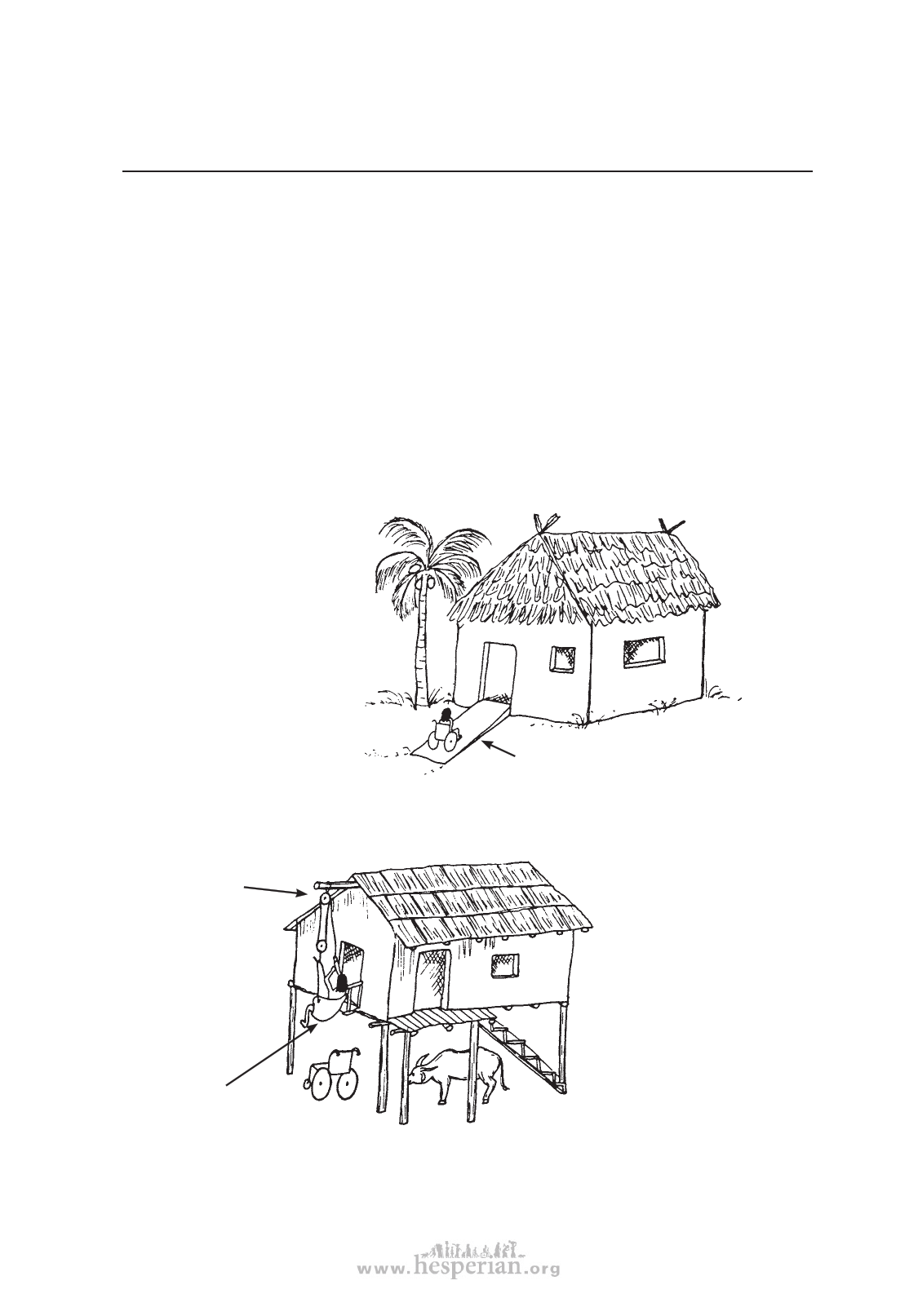
Adapting the Home
and Community
51CHAPTER
485
ADAPTING THE HOME
The kind of adaptations needed in the home will partly depend on the kind of
disability a child has, the severity of the disability and the age and size of the
child. Adaptations for a child who is blind are very different than those for a child who
is paralyzed and uses a wheelchair. A child who is completely dependent will need
aids and adaptations to help the family care for him and move him—especially as he
gets older and heavier. However, the disabled child who can do a lot for herself may
be helped by adaptations that make self-care and work in the house easier.
The kinds of adaptations needed will also depend on the local living situation,
style of house, and customs. For example:
A simple ramp may work
well for a wheelchair
entrance to a house
near ground level.
Ramp can be made of wood or of
dirt or rocks, perhaps covered
with a thin layer of cement.
For details, see p. 489.
block and tackle
(system of pulleys)
canvas sling
A system of ropes and pulleys
may be the best way for a
person with strong arms to
lift herself without help
to a ‘house on stilts’.
The ‘lift’ can be made with a platform so that the whole wheelchair can be lifted. But if the house
is small and people cook and eat at floor level, it may be best to leave the wheelchair outside.